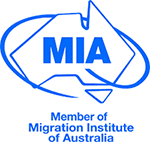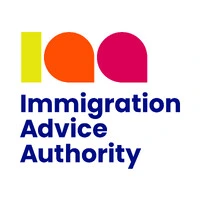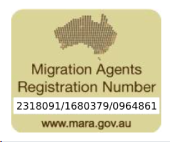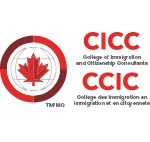Table of Contents:
| QS World University Rankings 2024 | ||
| USA Rank | Global Rank | University |
| 1 | 1 | Massachusetts Institute of Technology (MIT) |
| 2 | 4 | Harvard University |
| 3 | 5 | Stanford University |
| 4 | 10 | University of California Berkeley (UCB) |
| 5 | 11 | University of Chicago |
| 6 | 12 | University of Pennsylvania |
| 7 | 13 | Cornell University |
| 8 | 15 | California Institute of Technology (Caltech) |
| 9 | 16 | Yale University |
| 10 | 17 | Princeton University |
| S. No. | University | Tuition Fee |
| 1 | California State University | Undergraduate – USD 17220+ /year Graduate - USD 8850+ /year |
| 2 | Brigham Young University | Undergraduate – USD 6490+ / semester Graduate – USD 8160+ / semester |
| 3 | Southwest Minnesota State University | Undergraduate – USD 300 / credit Graduate – USD 480 / credit |
| 4 | Dakota State University | USD 5960+ / year |
| 5 | Nicholls State University | Undergraduate – USD 4480 / semester Graduate – USD 4220 / semester |
| 6 | University of Buffalo | Undergraduate – USD 24990 / year Graduate – USD 25990 / year |
| 7 | Northern State University | Undergraduate – USD 30 / credit Graduate – USD 55 / credit |
| 8 | Oklahoma Panhandle State University | Undergraduate – USD 29440 / year Graduate – USD 25200 / year |
| 9 | Delta State University | Undergraduate – USD 500 / semester Graduate – USD 500 / semester |
| 10 | Mississippi University of Women | Undergraduate – USD 7860+ / year Graduate – USD 7860+ / year |
| Intake | Month/s |
| 1st | January (Spring) |
| 2nd | August (Fall/Winter) |
| 3rd | May (Summer) |
| Student Visa Fee | Charges in USD |
| SEVIS fee for F/M SEVIS fee for J | 350 220 |
| DS-160 fee | 160 |
| Biometrics fee | 85 |
| Total | 465 (J)/595 (F/M) |
Cost of certified translation, standardized test and issuance fee vary.
Our Accreditations | |||
 |  |  |  |
Explore what global citizen have to say about Y-Axis in shaping their future
USA Study Visa
Y-Axis received a great feedback from Pu
Read More...
USA study visa
Y-Axis received a great feedback from Ni
Read More...
USA Study Visa
Y-Axis Client applied for USA Study Visa
Read More...
Students from the UK in the USA with F-1 student visa can avail the following benefits:-
a. You can come to the USA to study a course full-time and get a degree or certificate.
b. You can transfer to a different school or even switch academic programs by notifying the USCIS.
c. Legally you can work part-time on-campus for 20 hours per week. You can pursue off-campus employment, if it is economically rewarding or involves practical training.
d. You can travel across the USA or abroad, or remain in the USA until you have completed your courses.
e. As an F-1 visa holder you can bring your spouse and children to the USA on an F-2 visa and may work in the USA.
f. You can go back to the UK and re-enter the USA with a valid F-1 visa as many times as you want, provided you have a valid Form I-20A-B recently signed by your school advisor; a valid passport; and proof of your financial support.
Students from the UK in the USA with F-1 visa have to deal with the following limitations:-
a. You can work off-campus with an F-1 visa only with permission from the USCIS.
b. You can attend only that specific school/university in the USA for which your F1 visa has been approved.
c. As an F-1 visa holder you can bring your spouse and children to the USA on an F-2 visa, but they may not work in the USA.
d. As an F-1 visa holder, you may not qualify to apply for a USA Green Card.
You can apply for your nonimmigrant USA student visa once you have your I-20 form. Form I-20 is a form that tells the US government that you can study in the USA as an eligible F-1 student status.
The I-20 form is sent to you by the university/college where you want to be accepted for an educational program. You need this form to apply for a student visa in the USA. The I-20 form certifies that:-
a. you are a “bona fide” student in the USA.
b. you meet admission requirements for a USA educational institute.
c. you will pursue a full-term educational course in the USA.
d. you have enough financial resources to live and study in the USA without doing anything illegal or suffering from poverty.
You submit the I-20 form to the educational institute where you want to be enrolled as a student. Ensure that you fill out the form to get the student visa early so that you can start your educational course on time.
However, note that a student visa won’t be issued before 365 days prior to the start date of your desired educational program, as mentioned in the I-20 form.
International students who wish to attend a valid educational program in the US within the next 60 working days, can apply for an emergency visa.
However, the appointment for an emergency visa will be given only to those applicants who have not been previously denied a US visa, that too in the last 6 months.
Note that an emergency visa can be issued to international students only once if the valid educational program you are attending in the US is going to start in the next 60 working days.
The international student must pay the regular visa fees to book a regular visa appointment in the requisition/I-20 form. In the I-20 form, beside the regular appointment, there is the option for ‘Emergency Request’ in blue blocks.
Once the international student ticks/checks the option for ‘Emergency Request,’ the visa application is considered for ‘Emergency Request’ by US embassy officials.
But whether it is approved or not is entirely the discretion of US embassy officials’ who can do it within a few hours or a maximum of 2 days. Once approved the international student from UK has the next 5 days to choose visa dates.
It is essential for the international student from the UK to choose a valid reason from the following to requisition an ‘Emergency Request,’ namely:-
1. Medical Needs
2. ESTA Denied
3. Funeral/Death
4. Urgent Business Travel
5. Students or exchange visitors
International students from the UK to boost their ‘Emergency Request’ case can upload up to 5 supporting documents including a DS-160 confirmation page, admit card, I-20 form, and more.
The Curricular Practical Training (CPT) is an optional employment opportunity for holders of F-1 student visas, where training is considered an integral part of the academic program.
As per US immigration rules, this optional employment can be in the form of an internship, practicum, cooperative education job, or any other job that is either compulsory for your degree course or for which academic credit points are awarded.
It can be on-campus or off-campus jobs or both, over 20 hours of full-time job per week or up to 20 hours part-time job per week for a total of 12 months.
Optional Practical Training (OPT) is a temporary employment authorization that gives holders of F-1 student visas a chance to apply the knowledge gained in the classroom for practical work experience in an off-campus job.
As an international student, you may use some or all 12 months of practical training during your study or save it to use after completing your studies. USCIS is the lone authority to grant this permission, and it takes between 90 and 120 days to obtain OPT.
Student & Exchange Visitor Information System (SEVIS) is a web-based system to maintain information on F-1/M1 international students, J-1 exchange visitors, and SEVP-certified schools.
SEVIS is also used to monitor the dependents (F-2/M-2 visa holders) of international students. SEVIS is managed by the Department of Homeland Security (DHS)’s Bureau of Immigration & Customs Enforcement (ICE).
US Schools use SEVIS to petition the Student and Exchange Visitor Program (SEVP) for certification. It allows them to update school/sponsor information, issue a ‘Certificate of Eligibility for Nonimmigrant Student Status’, fulfill legal responsibilities, issue I-20/DS-2019 forms to students, and send SEVIS records to other institutions.
| I Want To Study a… | Hours | Visa Type |
| Technical course at vocational/non-academic institution (doesn’t include English language course) | full-time | M-1 visa |
| Educational exchange programme, credited as part of my existing home study programme | up to (maximum) 18 hours a week | |
| Professional education course which does not result in academic study | does not apply | |
| Short recreational/vocational course (not as part of an existing programme of study) while on holiday | does not apply | |
| Course at an academic institution (university, school, etc.) | full-time | F-1 visa |
| Educational exchange programme, credited as part of my existing home study programme | more than 18 hours a week | F-1 visa |
| English language course | full-time | F-1 visa |
| S. No. | Name of the scholarship | Description |
| 1 | Fulbright-Nehru Fellowship | Meant for international students applying to Master’s or PhD programs. It covers accidents, tuition fees, and sickness as per US guidelines, airfares, and living costs. |
| 2 | Hubert Humphrey Fellowship Program | Part of the Fullbright program, it aims to bring an accomplished young, and mid-career professional from a developing nation to the US for 10 months for non-degree graduate study and get related practical experience. |
| 3 | #YouAreWelcomeHere Scholarships (NGO funded) | It’s a scholarship and social media campaign that welcomes international students to the US higher education system regardless of subject. |
| 4 | UEFA | Sponsored by Abbey Road Inc., it grants scholarships to high school students between 14 to 18-years displaying exemplary performance in academics, and extracurricular activities. |
| 5 | AAUW International Fellowships | Awarded to international women students for full-time study and research in the US. It supports both graduate and post-graduate students accredited in the US institutions. |
Yes, studying in the USA can be expensive, with average living costs and tuition fees ranging from $25,000 to $60,000 annually for international students. The costs may, however, vary depending on the below factors:
Some of the best courses to study in the USA are as follows:
To be eligible for a PhD in the USA, you must meet the following criteria: